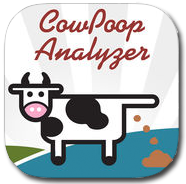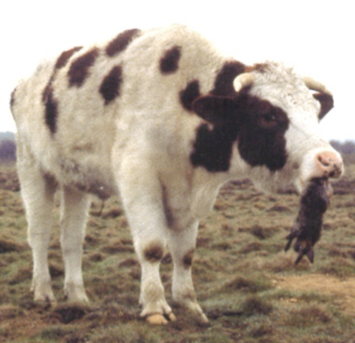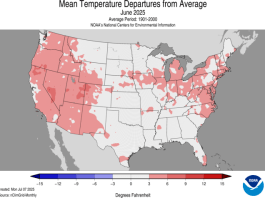You can use your iPhone and a pile of poop to figure out your forage quality!
 With the “Cow Poop Analyzer” app, you take a picture of a manure pile, and then compare your picture to file photos. Each file photo comes with an estimate for the crude protein and digestibility you can expect from your forage based on the quality of the manure. Even better, you can add a title and pasture name to the automatically dated record. Then you’ll have a history of forage quality in your pastures over time.
With the “Cow Poop Analyzer” app, you take a picture of a manure pile, and then compare your picture to file photos. Each file photo comes with an estimate for the crude protein and digestibility you can expect from your forage based on the quality of the manure. Even better, you can add a title and pasture name to the automatically dated record. Then you’ll have a history of forage quality in your pastures over time.
Using the App is easy:
1. Click on “Create New Record”

2. Allow the app to use your iPhone’s camera
3. Take a picture of the poop.
4. If you like the picture, click “Use Photo” and if you don’t click “Retake.”
5. When you click “Use Photo” a screen will come up comparing your photo to stock photos. Use your finger to slide from one photo to the next until you find one that most closely matches your photo. The crude protein and digestibility estimates are listed under the stock photo.

6. Click “Save” and then enter a title, pasture name/number and any notes.

7. Click “Submit” and you’re all done.
8. Now you’re back at the home screen. You can choose to “View Existing Records” or click on “Forage Quality Descriptions” to learn more about forage quality based on manure clues.

The app is available for iPhones and iPads. If you don’t have one of those, here are pictures and info from Texas A&M’s “Forage Quality Photo Guide” that you can use the old fashioned way:
 This dropping indicates a forage crude protein greater than 20 percent and digestibility of 70 percent to 80 percent. The dropping forms around whatever is beneath it, with little shape of its own. Also, notice the dark green color. The high-quality forage is typically associated with cool-season winter forages such as small grains or ryegrass. Nutrient (protein and energy) availability exceeds the cattle’s requirements for maintenance, growth or lactation.
This dropping indicates a forage crude protein greater than 20 percent and digestibility of 70 percent to 80 percent. The dropping forms around whatever is beneath it, with little shape of its own. Also, notice the dark green color. The high-quality forage is typically associated with cool-season winter forages such as small grains or ryegrass. Nutrient (protein and energy) availability exceeds the cattle’s requirements for maintenance, growth or lactation.
 This dropping indicates a forage crude protein level between 10 percent and about 17 percent and a digestibility of 61 percent to 67 percent. Notice the slight crater-like appearance in the surface of this sample. In the 10 percent to 13 percent crude protein range, small folds may be present in the dropping. Supplementation, or the addition of protein and energy to the diet, is not required for mature cows. Forage, which creates droppings like this, should support 1 pound to 1.5 pounds average daily gain on heifers and steers.
This dropping indicates a forage crude protein level between 10 percent and about 17 percent and a digestibility of 61 percent to 67 percent. Notice the slight crater-like appearance in the surface of this sample. In the 10 percent to 13 percent crude protein range, small folds may be present in the dropping. Supplementation, or the addition of protein and energy to the diet, is not required for mature cows. Forage, which creates droppings like this, should support 1 pound to 1.5 pounds average daily gain on heifers and steers.
 This dropping indicates a forage crude protein level between 6 percent and 9 percent. Digestibility is from 58 percent to 63 percent; a slight overlap with the crude protein level of 10 percent to 17 percent. At this forage quality level, a dropping exhibits flat folds. As forage quality increases within this range, the folds become smaller. This dropping indicates that forage quality is adequate to supply maintenance requirements for mature cows. Minimal weight gain in replacement heifers and stocker cattle should be expected.
This dropping indicates a forage crude protein level between 6 percent and 9 percent. Digestibility is from 58 percent to 63 percent; a slight overlap with the crude protein level of 10 percent to 17 percent. At this forage quality level, a dropping exhibits flat folds. As forage quality increases within this range, the folds become smaller. This dropping indicates that forage quality is adequate to supply maintenance requirements for mature cows. Minimal weight gain in replacement heifers and stocker cattle should be expected.
 This cattle dropping indicates a forage crude protein level of 5 percent or less and digestibility at or below 56 percent. Notice the distinct rings in the lower right portion of the dropping. These rings tend to be firm. Droppings such as this tend to stack, however, stacking without the distinct hard rings is not characteristic of this forage quality level. This dropping indicates that forage is below the maintenance requirements for all classes of beef cattle. Forage digestibility and intake may increase with protein supplementation.
This cattle dropping indicates a forage crude protein level of 5 percent or less and digestibility at or below 56 percent. Notice the distinct rings in the lower right portion of the dropping. These rings tend to be firm. Droppings such as this tend to stack, however, stacking without the distinct hard rings is not characteristic of this forage quality level. This dropping indicates that forage is below the maintenance requirements for all classes of beef cattle. Forage digestibility and intake may increase with protein supplementation.
One last pointer – cows that have been running around or are stressed will have loose droppings. Don’t use those to judge forage quality.
Thanks to Dr. Megan Clayton for the app and to Scott McEldowney of Douglas County for introducing me to it!





Another useful app is the “CRAP” app by Utah St. for tracking manure applications.
Comments are closed.